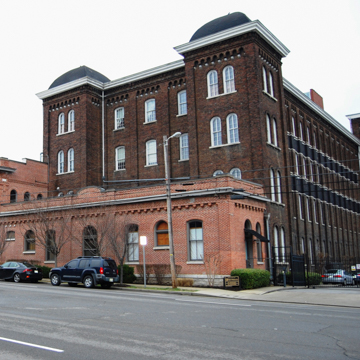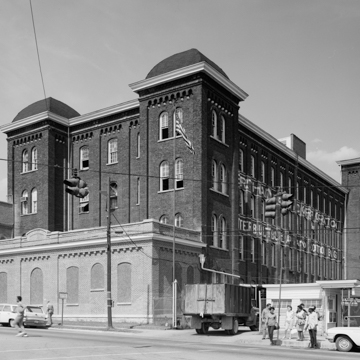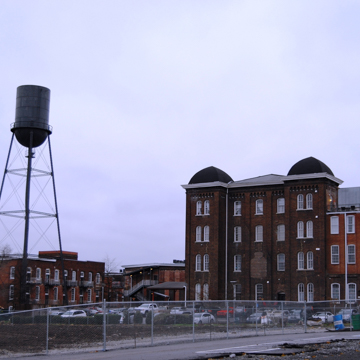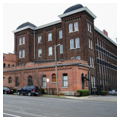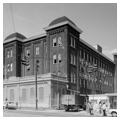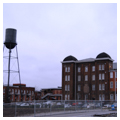You are here
Werthan Lofts
Originally home to the Tennessee Manufacturing Company, this complex of late-nineteenth- and early-twentieth-century industrial buildings was at one time the largest of three cotton mills in Nashville. The mill complex is located in Germantown, north of downtown (Nashville’s governmental and commercial core). Germantown gets its name from the German immigrants who once occupied its individual houses and cottages, attended its churches, and worked at its small industries.
Samuel Dold Morgan was a businessman and industrialist with several companies in the South. He started the Tennessee Manufacturing Company in 1869 and the first mills, producing several different weights of cotton fabrics, were ready to operate in 1871. The original four-story, brick mill building held looms, spindles, and steam engines. Expanding markets lead Morgan to build a second mill of three- and four-stories in 1880–1882. By 1890, over 800 people (mostly women) worked at the mill producing cloth, bags, and carpeting. In 1893 the Louisville and Nashville Railroad built a spur line to the mill complex.
Warioto Cotton Mills of Nashville purchased the complex in 1905 and operated it for only two years before selling it to another Nashville company, Morgan and Hamilton, which continued to use the Warioto name until the 1920s. Morgan and Hamilton diversified production, moving beyond cotton fabric to manufacture burlap bags, paper bags, and cotton flour sacks. In 1925 Morgan and Hamilton was the second largest maker of cotton bags in the country. Three years later, Morgan and Hamilton merged with the Werthan Bag Company, giving the complex the name it has to this day. The Werthan handled all aspects of production on-site, from spinning, bleaching, and making thread to manufacturing cotton and burlap bags. In the 1930s, Werthan purchased the nearby Nashville Cotton Mills complex. During World War II the expanded company prospered by selling fabric to the U.S. government. In the immediate post-war years, Werthan manufactured both cloth and paper bags, but in later years textile operations ceased completely. After subsequent diversification, the company became Werthan Packaging, Inc.
The early twenty-first century brought a redevelopment boom to the area around the old factory, marked by the rise of large apartment buildings and condominiums. Beginning in 1998, parts of the mill complex were sold off as manufacturing ceased at the site. Secondary buildings in the complex were demolished and the two largest mill buildings were remodeled for use as condominiums. Retail spaces are now being developed in the mid-twentieth-century print shop.
Werthan Packaging, Inc. is still in business in White House, Tennessee.
References
Historic American Buildings Survey. “Tennessee Manufacturing Company Buildings (Werthan Bag Corporation).” Library of Congress Prints and Photographs Online Catalog. Accessed July 27, 2016. http://lcweb2.loc.gov/master/pnp/habshaer/tn/tn0100/tn0109/data/tn0109data.pdf
Thomason, Philip, “Tennessee Manufacturing Company,” Davidson County, Tennessee. National Register of Historic Places Registration Form, 1999. National Park Service, U.S. Department of the Interior, Washington, DC.
Werthan Packaging, Inc. Accessed July 28, 2016. http://www.werthan.com/wpihome.html.
Writing Credits
If SAH Archipedia has been useful to you, please consider supporting it.
SAH Archipedia tells the story of the United States through its buildings, landscapes, and cities. This freely available resource empowers the public with authoritative knowledge that deepens their understanding and appreciation of the built environment. But the Society of Architectural Historians, which created SAH Archipedia with University of Virginia Press, needs your support to maintain the high-caliber research, writing, photography, cartography, editing, design, and programming that make SAH Archipedia a trusted online resource available to all who value the history of place, heritage tourism, and learning.

